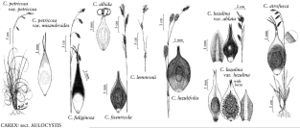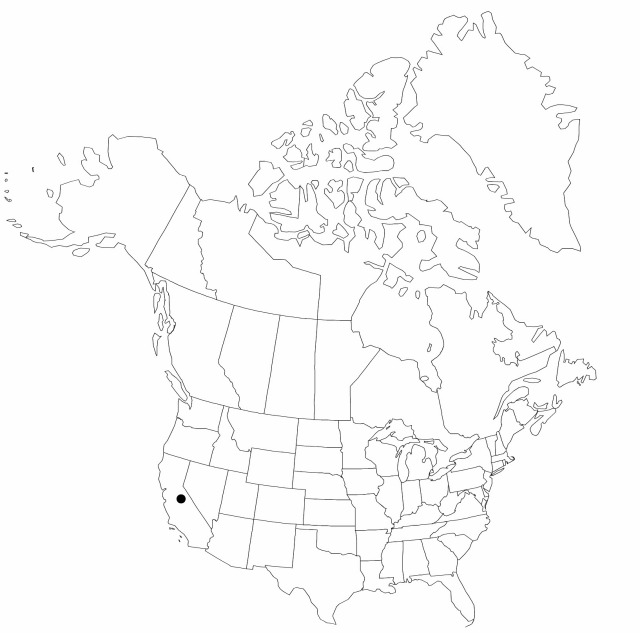Carex albida
Mem. Torrey Bot. Club 1: 9. 1889.
Plants densely to loosely cespitose; rhizomes thick, short. Culms to 60 cm. Leaves: blades 3–6 mm wide. Inflorescences longer than 15 cm, proximal internodes 100–250 mm; peduncles of proximal spikes commonly exserted less than 1 cm; proximal bracts with blade 40–125 mm, sheaths cylindric, 11–75 mm, mouth not purple-banded, 1.3–2.1 mm wide. Spikes 5–7; lateral spikes androgynous or pistillate, the proximal spikes erect to pendent, 9–20 × 5–8 mm; terminal spike staminate or androgynous, ± erect, 9–19 × 2.5–4.5 mm. Pistillate scales usually scarious with green to gold midvein, obovate to ovate, 2–4 × 1.2–2 mm, apex obtuse to acuminate or, sometimes, awned. Staminate scales gold with pale midvein with broad scarious margins, usually obovate, 2.8–4.3 × 1–2.4 mm, apex acute to short-awned. Anthers 1.4–2.2 mm. Perigynia spreading, green to gold, 11–16-veined, ovate to obovate, 3.1–4.5 × 1–1.6 mm, margins often ciliate distally, glabrous; beak distinct, 0.6–1.2 mm, apex white, ciliate, distance from beak tip to achene apex less than 1.4 mm.
Phenology: Fruiting late spring–early summer.
Habitat: Sphagnum bogs
Elevation: less than 90 m
Discussion
Of conservation concern.
Carex albida is similar to C. lemmonii and is now known from only one station in Sonoma County.
Selected References
None.
Lower Taxa
"shortened" is not a number."thick" is not a number.

